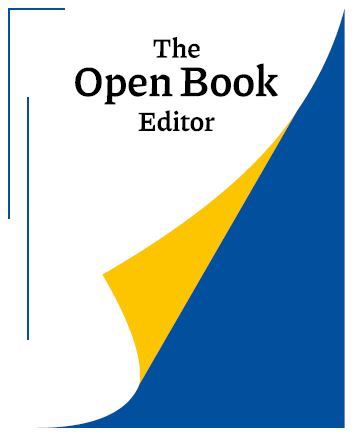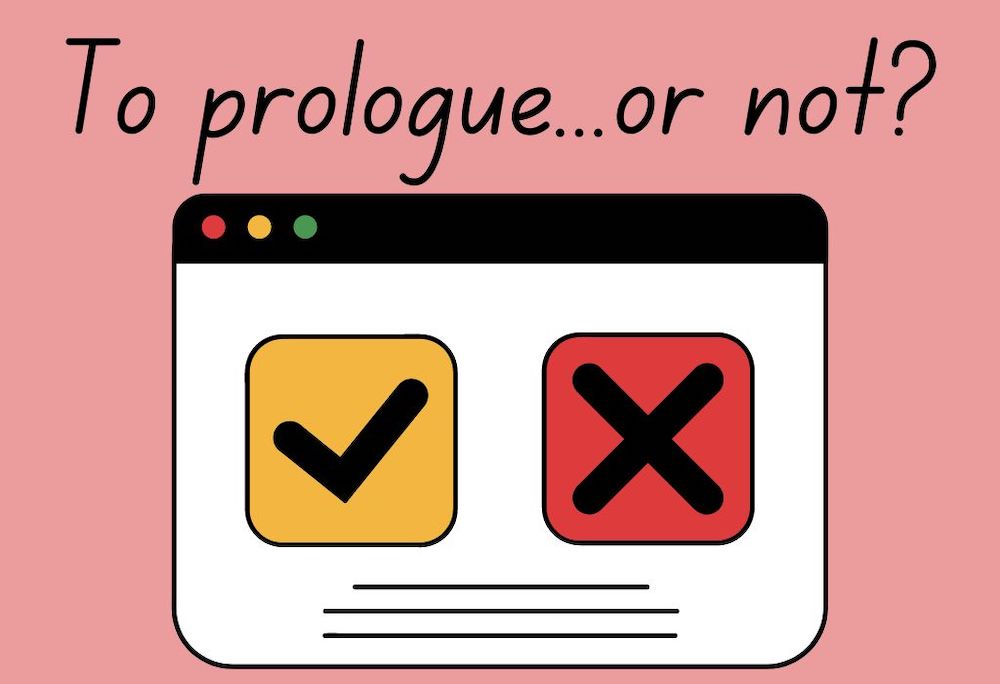There is a lot of debate over whether prologues are good in fiction or not. Prologues can build intrigue, give your reader insight into your characters, or help establish your setting. But a prologue won’t always benefit your novel. If done incorrectly, they can weaken your story and take away from an otherwise un-put-downable book.
So how do you know if your novel needs a prologue? And will a prologue make it more marketable? Let’s dive into the different types and how you can tell when a prologue will bolster your book or simply drag it down.
What is a prologue?
A prologue is an introductory excerpt that comes before your main narrative—i.e., before the first chapter of your book. It can serve as a quick introduction to your world, plot, or a character’s mindset. Look at it as a small appetiser that hints at the meal to come.
While a prologue should connect to the main story, it doesn’t need to be immediately obvious what that connection is. If done well, your book’s prologue will pique a reader’s interest and they’ll finish it eager to learn more. However, if done incorrectly, your reader might skip it to get to the main narrative or, worse, lose interest in your book altogether.
Four main types of prologues
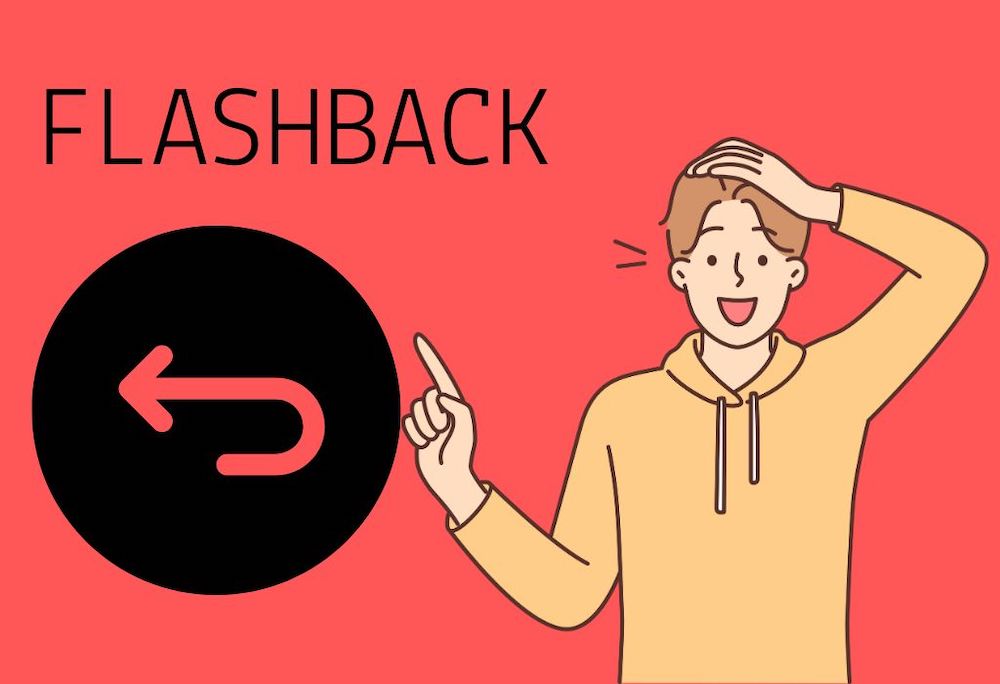
Flashback
This looks at something that happened in the past, before the time in which your main story is set. These types of prologues provide details of events that precede the main story and help to set the reader up with some historical context. While it can also provide opportunities for great character development, this isn’t the focus of a flashback prologue. Moreso, it should give historical context to the actions of your characters in the primary story.
Example: Silence by Shūsaku Endō is a historical fiction novel that features a flashback prologue. This details some of the history of Jesuit missionaries in Japan while also introducing a character and the actions which launch the main narrative.
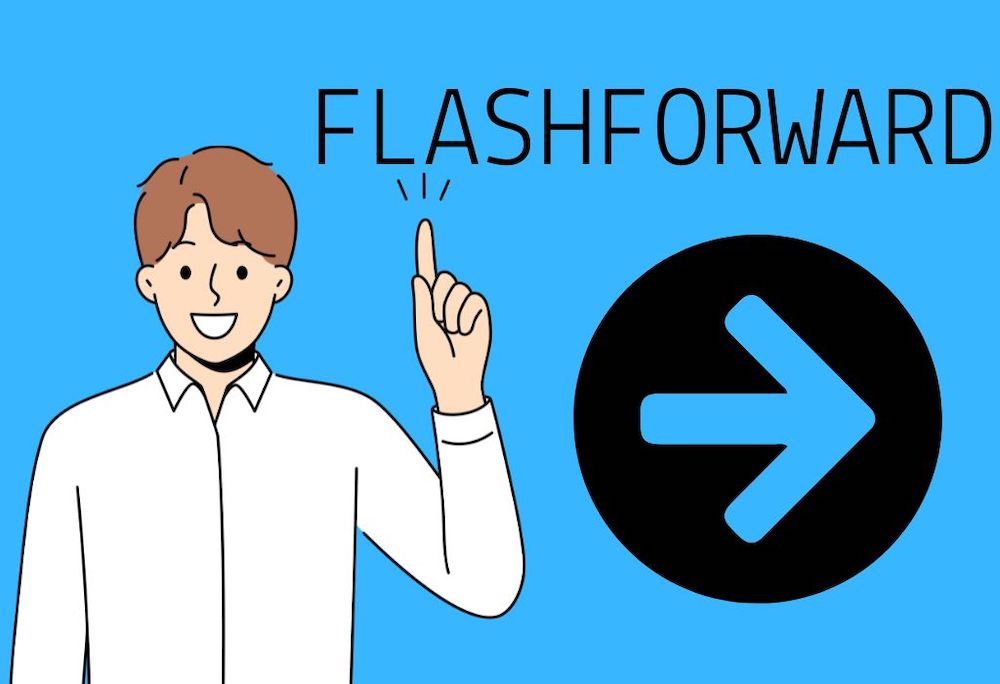
Flashforward
This type of prologue takes place at a future time. These work particularly well in thrillers, mysteries, and even horror. Readers will want to keep turning the pages to unravel the mystery of how your characters ended up in the situation presented in your prologue. Take note that a flashforward doesn’t need to take place after the events of the main narrative. A prologue can reference a midpoint or near-endpoint of your book, too.
Example: Perhaps one of the most effective uses of a flashforward prologue in fiction is from Frankenstein by Mary Shelley. The novel’s prologue is a series of letters from an explorer to his sister. In these, he details encountering a mysterious stranger during a voyage to the North Pole. The stranger turns out to be Dr. Frankenstein, who is on the hunt for his terrifying monster. In this way, Shelley sets the stage and builds anticipation for the main narrative, where the reader travels back in time to unravel the mystery of Dr. Frankenstein’s grim fate.
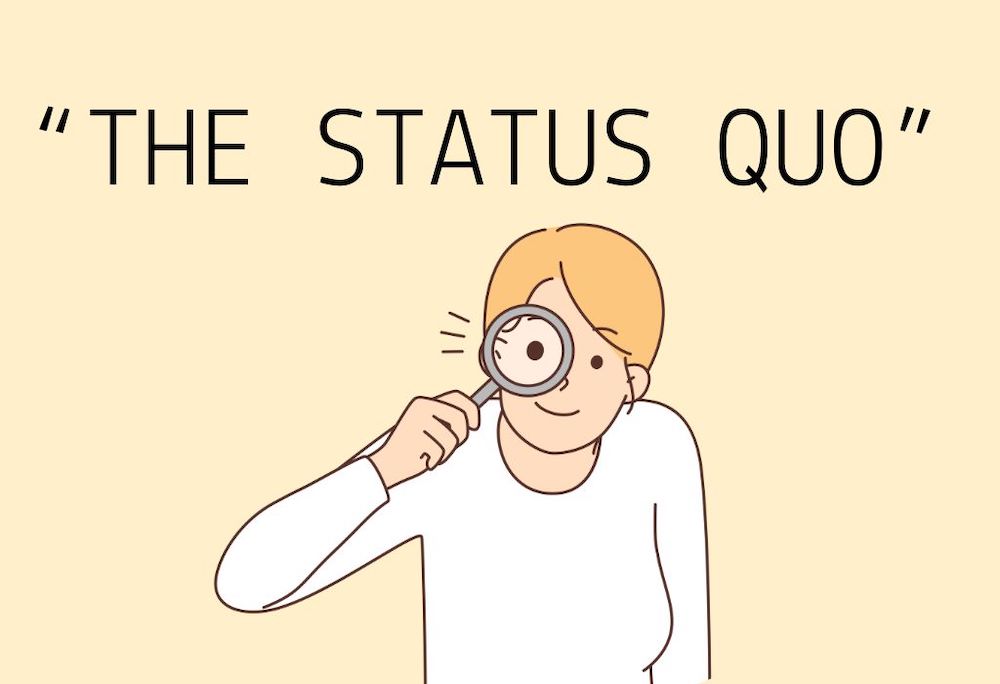
Background or “The Status Quo”
This type is useful for fiction that requires a lot of heavy world-building, such as sci-fi or fantasy. You can use an exposition prologue to set up your world quickly, establish the rules of how it works, or introduce important world-building details.
Example: J.R.R. Tolkien’s epic fantasy The Lord of the Rings features a prologue that serves the double purpose of re-introducing readers to the hobbits (who play a pivotal role) and detailing the history of Middle Earth. This sets readers up for what’s to come in the rest of the series and helps them better understand the book’s world.
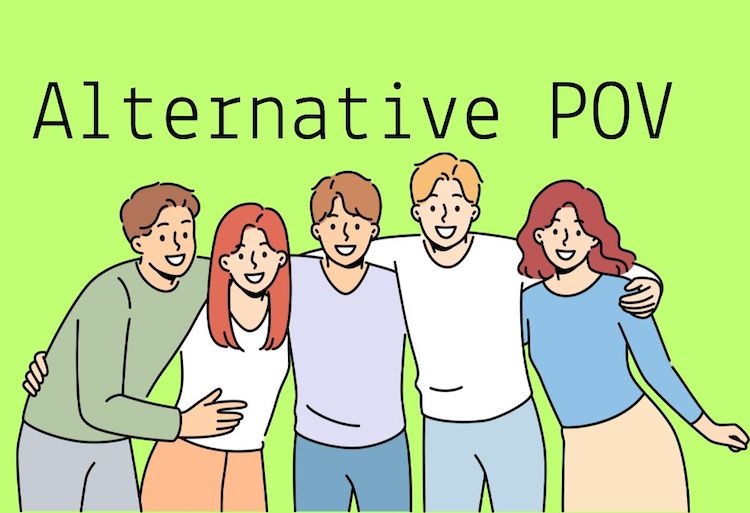
Alternative POV
One creative use of a prologue can be to present a different POV from that of your main character or characters. For example, if your book is from the perspective of your hero, you can create intrigue by having a prologue from the POV of your antagonist.
Example: George R.R. Martin opens his A Song of Ice and Fire books with prologues from the POV of minor characters. These characters are rarely seen again, but the prologues serve to give the readers a greater understanding of the world through the eyes of characters with insight into other parts or goings-on we otherwise wouldn’t experience.
What to avoid when writing a prologue
- Don’t info dump. You want your reader to race through your prologue, excited to learn more about your story, not skip over it because it’s boring and too info heavy.
- Don’t include a prologue that has nothing to do with the plot. This could mean a random POV that really doesn’t play into the rest of your story. Or information that’s not important to your plot.
- Don’t make it long. Much like writing an exciting book blurb or a hook, a prologue should be short and snappy. Look at it this way: if your prologue is longer than the majority of your chapters, then you need to rework it to make it shorter.
- Don’t rely too heavily on your prologue for world-building. In other words, don’t overdo your exposition! While a prologue can be useful for establishing background and setting, it is not the place for long-winded descriptions of what your world looks like or the characters in it. These types of world-building descriptions can be incorporated throughout your novel in more digestible ways.
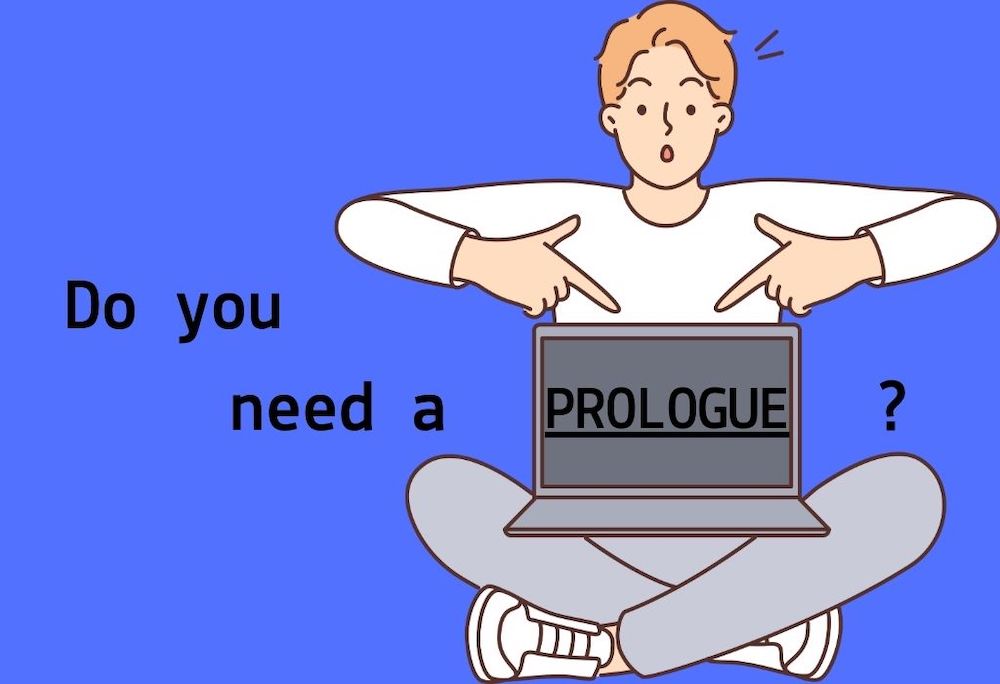
Do you really need a prologue?
To know if you really need a prologue, look at your manuscript with a critical eye and ask yourself some key questions:
- What information am I providing in the prologue? Is it information that’s important to reveal up front? Is it contributing to my plot in a meaningful way? If you’re able to sprinkle the information from your prologue throughout your book without negatively impacting your plot or pacing, then you probably don’t need it!
- Is this alternative POV important? For example, does reading a prologue from your antagonist’s POV help the reader understand the story and hero better? Or is it just gratuitous?
- Does the alternative POV from your prologue come up later in the book? If so, your prologue might work better as a regular POV chapter.
- Does your prologue get readers asking questions about the plot? Does it foreshadow future events and build intrigue? If so, it probably will work well in the context of your book.
- Are prologues common in your genre? Some genres work better with prologues than others. If you’re writing in a genre where prologues are scarce, ask yourself why that is and if you really need one. While a prologue could be a great way to tease a mystery in a thriller, it might seem out of place in a YA romance. And if you’re planning to query your book, it’s good to keep in mind that some agents don’t appreciate prologues in certain genres.
To prologue or not to prologue?
As the author, you get to choose whether or not you need a prologue in your book. If you can’t tell right away, don’t sweat it. You may not be sure if you need (or don’t need) a prologue until after you finish your first draft and start editing your book.
But no matter what, always aim to get outside feedback. Getting objective eyes on your mansucript is an essential part of the writing and editing process—after all, killing your darlings can be hard! Aim to get multiple objective readers—either by hiring an author coach, joining a writing group, or finding beta readers to read your manuscript.
Remember, your prologue is meant to be a sort of appetiser to the main meal (a literary amuse-bouche, if you will). Other readers can taste test your prologue and tell you if it piques the appetite for the rest of the book, or leaves a bad taste on the palette. This way, you’ll be able to make each word count and be that much better prepared for querying, pitching publishers, or self-publishing.
